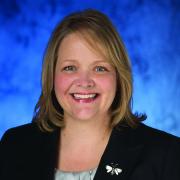Daycare or School? There’s a Third Way

A recent Atlantic article questions the linguistic shift by parents from the term daycare to school. Examples of toilet training and too much academic rigor are used to suggest a large gap in philosophy for the role of child care. The actual gap is between the science of early learning and America’s policy agenda. Daycare demeans, and school sets the wrong expectations for toddlers.
Historically, child care has been tasked with supporting working parents, with the focus on keeping kids safe rather than promoting their development and learning. Yet most families want and need both. And neuroscience has confirmed what social scientists have long suspected—the first five years of life are the critical time for rapid brain development. During this period, children build the foundation for lifelong learning—and learning works best when mediated by relationships with caring, knowledgeable adults. A baby first babbles, then puts sounds together, discovers words, and strings words together. Her vocabulary is a function of the language she hears around her. Fine motor skills development (think, holding a pencil in first grade) is evident in pinching a slice of peach and putting it in her mouth. Games like Simon Says and Red Light/Green Light help teach impulse control, logical reasoning, and critical thinking. These are the very skills 21st century employers say they most desperately need.
Providing care and education
As parents come to understand this science, they seek out environments that keep their kids safe and maximize early learning experiences. These are early learning programs where children are engaged in problem solving, exploring the environment, navigating conflicts at the water table, and learning STEM basics by changing the incline of a ramp to make a marble roll down faster. They are places where early childhood educators—teachers, not child care workers—have requisite knowledge, skills, and competencies; where they bring a dramatic play area to life with the right questions and materials; where early childhood educators understand that their primary responsibility is a child’s learning and development as well as his safety.
State and federal policies, which too often perpetuate the false dichotomy between care and education, have not connected the dots between high-quality learning and supporting working families. Insufficient funding and fragmented regulatory structures make it difficult to attract and retain the qualified staff who are the key to program quality. Average wages for early educators are a mere $10.40 per hour; 46 percent of these teachers must rely on some sort of public assistance to support their families; and just slightly more than half have any type of post-secondary degree. Depending on the state and the program, what early childhood educators are required to know and be able to do varies widely. And while parents may be increasingly aware of their options for high-quality programs, those options are out of reach for most families.
The path ahead
What will it take for policy to catch up to science? First, we must significantly increase our investment, fully funding programs so that children and families have access to full-day, full-year, high-quality early learning that meets the needs of working families. Second, we must fund the real cost of quality. It won’t be cheap, but it is far more cost effective than what we spend for remediation when we don’t make these programs available. Third, early educators must be better compensated so they can build a career in early learning, not just pass through the profession on their way to a different field that pays them a liveable wage. Finally, much like nursing and speech pathology, the field of early childhood education must define the knowledge, skills, and competencies required to be an effective educator. Then degree programs and state regulatory and licensing structures must align to meet those competencies.
The National Association for the Education of Young Children has convened a collaborative effort to define our field of practice. Now we must make sure our policies reflect the new reality. It’s all about early learning—it’s not rocket science, but it is definitely brain science, regardless of the labels we use. All early education settings—child care centers, family child care homes, public and private schools, Head Start programs, community centers, faith-based programs—can be dynamic, developmentally appropriate environments that strongly support children’s learning and enable parents to go to work with peace of mind. We have to muster the courage to build the right policy—the policy that accelerates access to high-quality early learning for all kids, especially those who are at greatest risk for starting school behind their peers and who far too often never catch up.
Rhian Evans Allvin is the chief executive officer of NAEYC. She is responsible for guiding the strategic direction of the organization as well as overseeing daily operations. Before joining NAEYC, Evans Allvin was a guiding force in Arizona’s early childhood movement for more than 15 years, including serving as CEO of Arizona's First Things First.
